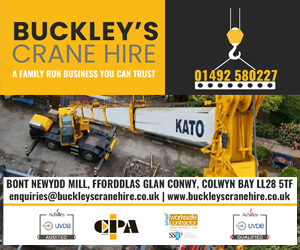Time and date
CONSTRUCTION DIRECTORY
ALL ASBESTOS
WHAT IS ASBESTOS?
If you’re looking for asbestos removal & it’s disposal, it’s important to know what you’re dealing with. Asbestos is a naturally occurring fibrous mineral that was widely used in the building trade due to its insulative and fireproofing properties. Although asbestos was banned in the UK in 1999, many buildings built or refurbished before this date still contain asbestos-containing materials (ACMs).
According to the Health and Safety Executive (HSE), asbestos is the single greatest cause of work-related deaths in the UK. There are strict rules for the removal and disposal of asbestos that must be followed.
That’s why you should you leave the removal and disposal of all ACMs to licensed asbestos removal contractors who are certificated by a professional body such as the UK Asbestos Training Association (UKATA) or British Occupational Hygiene Society (BOHS).
Here are just some of the asbestos removal services we offer:
- Asbestos Removal
- Asbestos Roof Removal
- Asbestos Artex Removal
- Asbestos Floor Removal
- Asbestos Ceiling Removal
- Contaminated Land & Soil
ALL ASBESTOS has an expert team with the necessary skills and experience to remove all kinds of asbestos-containing materials regardless of the size or complexity of the project. We are fully qualified and insured in the safe removal of all licensed & non-licensed asbestos.
DIFFERENT TYPES OF ASBESTOS REMOVAL
There are mainly six unique minerals which are grouped as “asbestos”.
The three most common types of asbestos are:
- Chrysotile (white asbestos) is the most commonly used form of asbestos. It can be found today in the roofs, ceilings, walls and floors of homes and businesses.
- Amosite (brown asbestos) was used most frequently in cement sheets and pipe insulation. It can also be found in insulating board, ceiling tiles and thermal insulation products.
- Crocidolite (blue asbestos) was commonly used to insulate steam engines. It was also used in some spray-on coatings, pipe insulation, plastics and cement products.
The following types of asbestos are not as common, but no less dangerous:
- Anthophyllite was used in limited quantities for insulation products and construction materials.
- Tremolite was mostly used as a contaminant in chrysotile asbestos and found in paints, sealants, asbestos-containing insulation products and talc products
- Actinolite was commonly found as a contaminant in composite flooring.
WHERE IS ASBESTOS?
Since asbestos was used extensively in the building industry, its presence can be found in a wide variety of different locations. Asbestos is most commonly found in corrugated or flat roofing and wall panels, partition walls, down pipes, gutters, flues, vinyl floor tiles, cement flooring, and textured coating on walls and ceilings, to name only a few.
WHO NEEDS ASBESTOS REMOVAL?
If you are the owner or manager of a non-domestic property, it is your legal responsibility to assess and manage the risk of asbestos-containing materials under the Control of Asbestos Regulations 2012. Although asbestos might have been present on your premises for a long time, there is always the risk that anyone working on the building could damage or disturb the asbestos and release the dangerous fibres into the environment. It is recommended that you arrange an asbestos survey if you suspect there are ACMS in your premises. We provide UKAS accredited asbestos surveys for domestic, commercial and industrial properties across the UK.


















